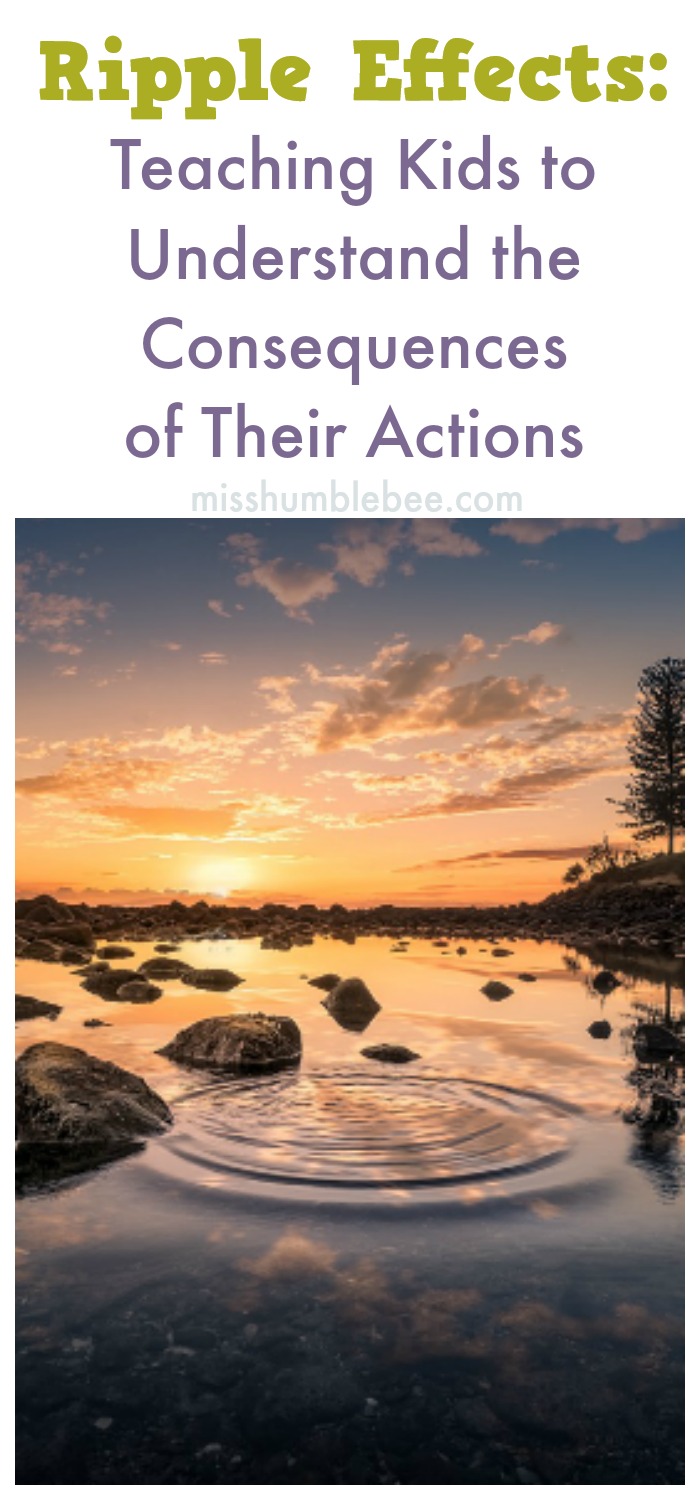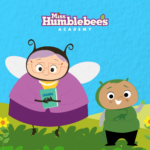“It’s not my fault!”
Few words to come out of the mouths of children are as frustrating to parents as those ones.
We want our kids to take responsibility for their actions, but often their instinct is to ‘deny deny deny.”
Teaching our kids to take responsibility is a process that takes time and patience, but if we’re going to commit to it, it makes sense to do a thorough job.

Ripple Effects: Teaching Kids to Understand the Consequences of Their Actions
A first step in teaching our children to understand the consequences of their actions is to provide consequences that suit the action. For example, if your child makes a mess with his toys, the consequence should be to clean them up. Some actions and consequences are not so clear cut, but whenever possible, try to provide a consequence that closely suits the action.
Another important lesson in the journey to responsibility is that not only do our actions having immediate consequences for ourselves, they often have consequences that extend beyond ourselves. Helping them see the bigger picture is an important part of teaching our children responsibility.
Since kids often learn best through hands-on activities, try this:
Take your child to a body of water. This could be a large lake or even just a bowl of water on your kitchen counter. Demonstrate dropping a pebble into the water and let your child take a turn.
Ask her to make observations. What does she notice when she drops the pebble in the water? What happens to the water?
If she doesn’t notice the ripples, do it again and point them out.
Explain that our actions are much like dropping a pebble in the water. They don’t only affect us (the immediate splash or ripple), but also cause a ‘chain reaction’ of sorts (the expanding ripples).
Once you’ve completed the activity, you can discuss how this might play out in a real life example. To stick with the example that we used above of making a mess with toys, ask your child what might happen if he leaves his toys everywhere and doesn’t clean them up. Be prepared to prod your child along, but once he gets the hang of what you’re trying to explain, he’ll probably come up with some pretty creative chain reactions.
For instance, instead of the simple consequence of someone tripping on a toy and bumping their knee, it could turn into someone tripping, having to go to the hospital, getting a cast, etc.
If your child takes a lot of coaxing to get moving in the morning, walk her through how running behind not only makes her late for school, but it also affects her parents getting to work on time, which affects her parents’ coworkers which could, in turn, affect their families as well.
As we mentioned before, teaching our children to take responsibility for their actions is a process that requires patience and persistence. But if you stick with it and help your child consistently consider the bigger picture, the ripple effects their actions cause, you’ll start to see your kids develop into responsible people.










